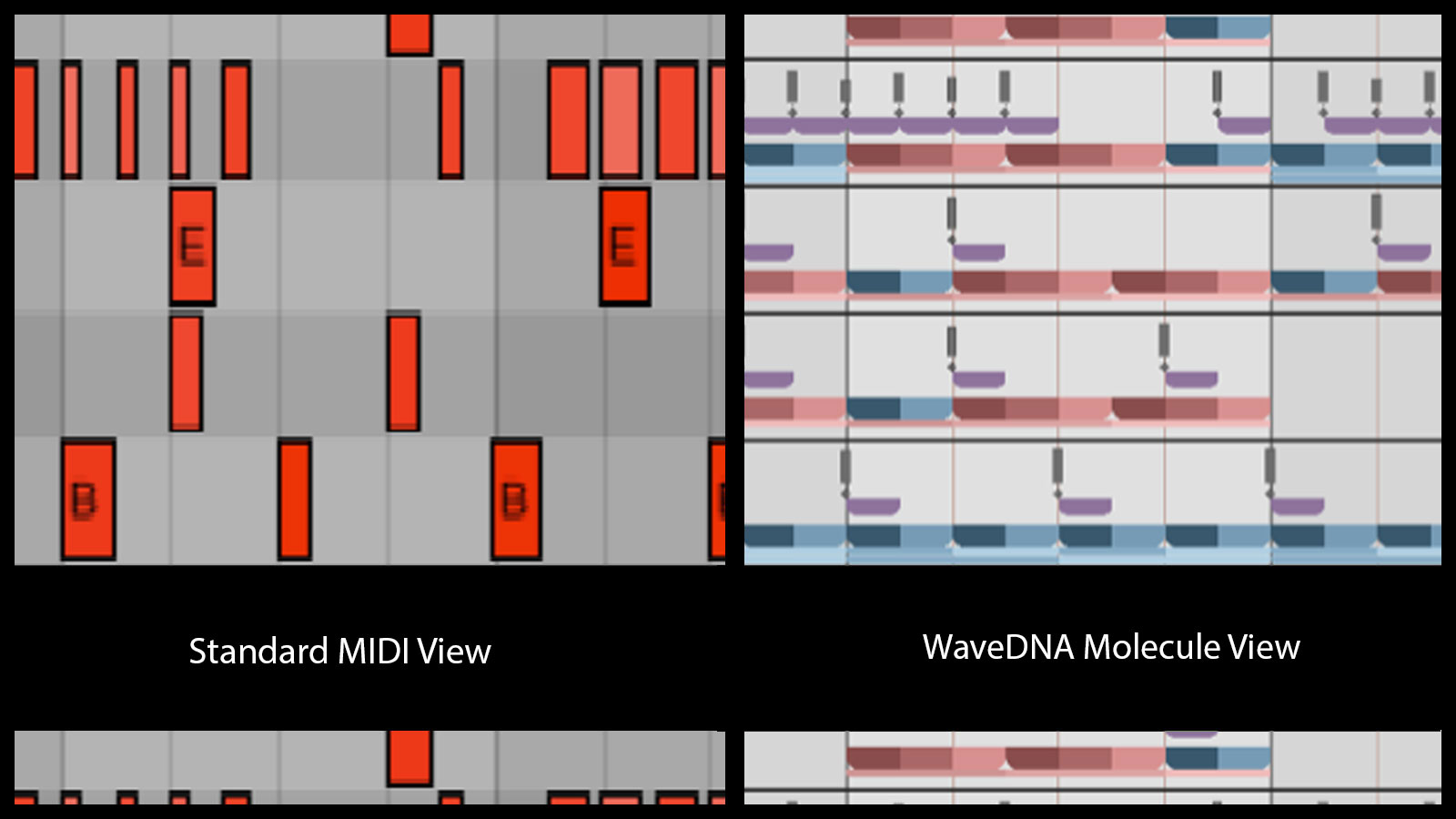
What is unique about WaveDNA’s approach?
What is unique about WaveDNA’s approach? What’s unique about Liquid Rhythm compared to other solutions?
Briefly, the unique aspect of WaveDNA is the system we use to parse MIDI (or break it into smaller re-usable chunks). On it’s own, MIDI is just a linear scroll in the familiar ‘piano roll’ layout. It is machine-like, and not easily readable (just a bunch of blocks in space). Our system applies a non-linear structure to each bar of a MIDI music file that provides weightings for each of the possible note locations. This accounts for the different colours and shadings you see in our visualization.
What is unique about WaveDNA’s approach? What problem does Liquid Rhythm solve?
This approach solves issues to do with making MIDI more readable in a musically meaningful way, but more deeply, it also provides a promising basis for cataloging ideas according to musical properties in a way that enables ‘big data’ types of musical analysis. This, in turn, enables more powerful abilities to search a database of music, or compare artists or genres, or to auto-generate musical ideas within constraints that can be easily set by the user.
What is unique about WaveDNA’s approach? What’s the implications of this method or strategy?
Further implications of this approach are that it opens up more possibilities for ways of controlling and manipulating MIDI content in various workflow situations. Intelligent editing functions allowing users to shift and change multiple events of a particular type within an arrangement all at once, can be mapped to various external controllers (including early eye-tracking interfaces, as well as tablets, or music specific hardware controllers). Our ongoing collaborative relationship with Ryerson University’s SMART Lab (for music psychology and cognition) is further dedicated to enhancing our software applications with analytics and controls that are mood or emotion-based. Such controls could enable users to manipulate their creations toward a specific emotion, or to retrieve ideas based on emotion-based categories, or to simply check their work against an ‘artificial listener’.

Comments are closed